Abstract
The presence of Salmonella spp. was investigated at three sewage treatment plants in Oslo, Norway. Salmonella bacteria were isolated from floor surfaces and areas with hand contact in the treatment plant, from floor surfaces and areas with hand contact in the treatment plant, from floor surfaces in the changing rooms, and in one case from floor surfaces in an eating room. The sewage sludge contained from 140 to 140,000 Salmonella spp. per 100 g dry weight. Raw and treated sewage contained an average of 130 and 3 of these bacteria per 100 ml, respectively. There was poor correlation between the pattern of serotypes isolated from the sewage works and the patterns of those which were registered among the population of Oslo during the investigation. Neither enteropathogenic bacteria nor parasite eggs were found in fecal samples from employees at the plant. The health significance of the presence of Salmonella spp. in the environment of sewage workers is discussed.
Full text
PDF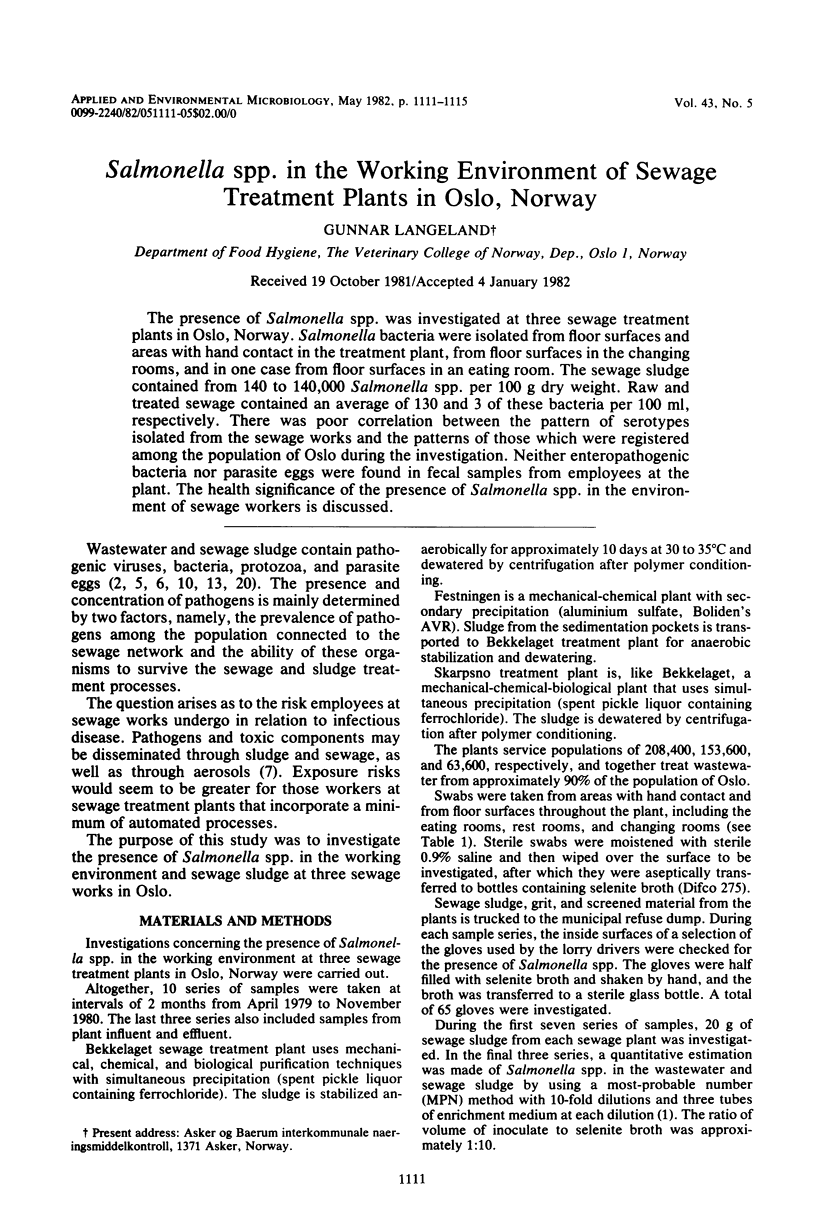
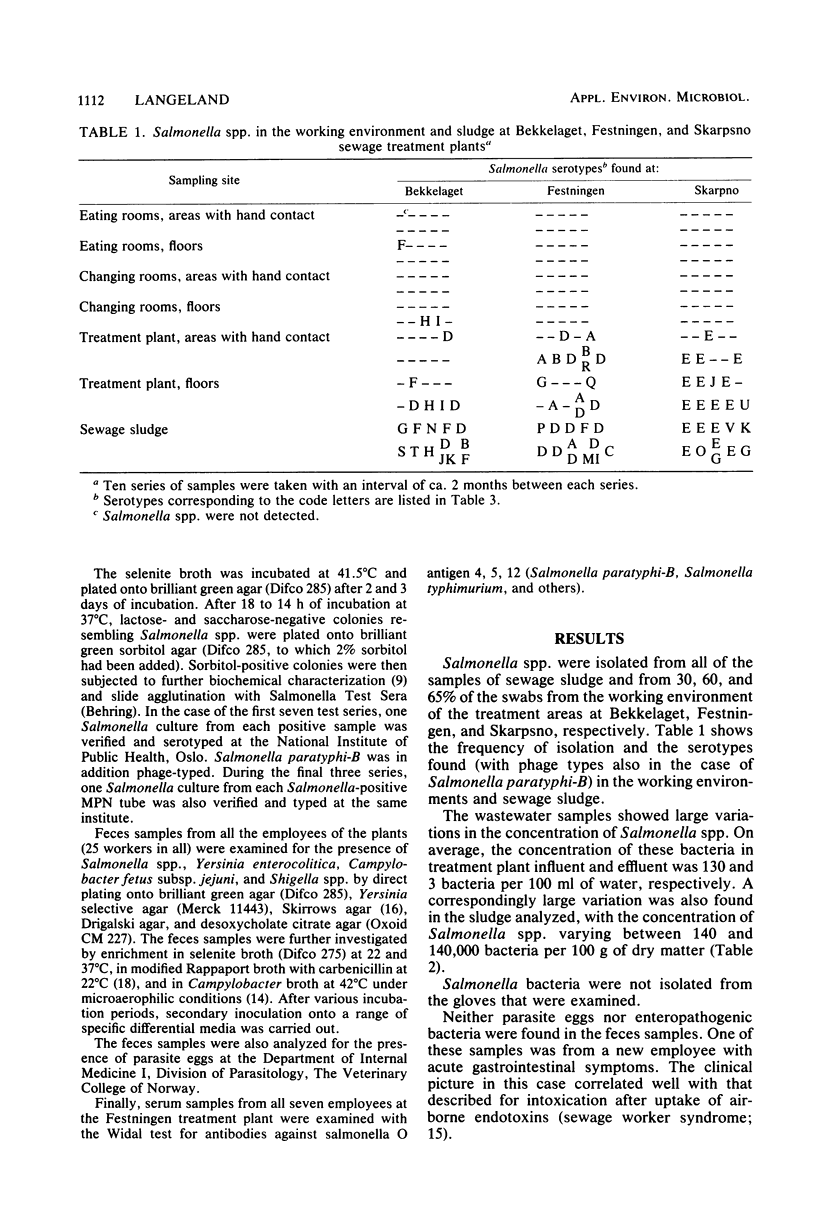
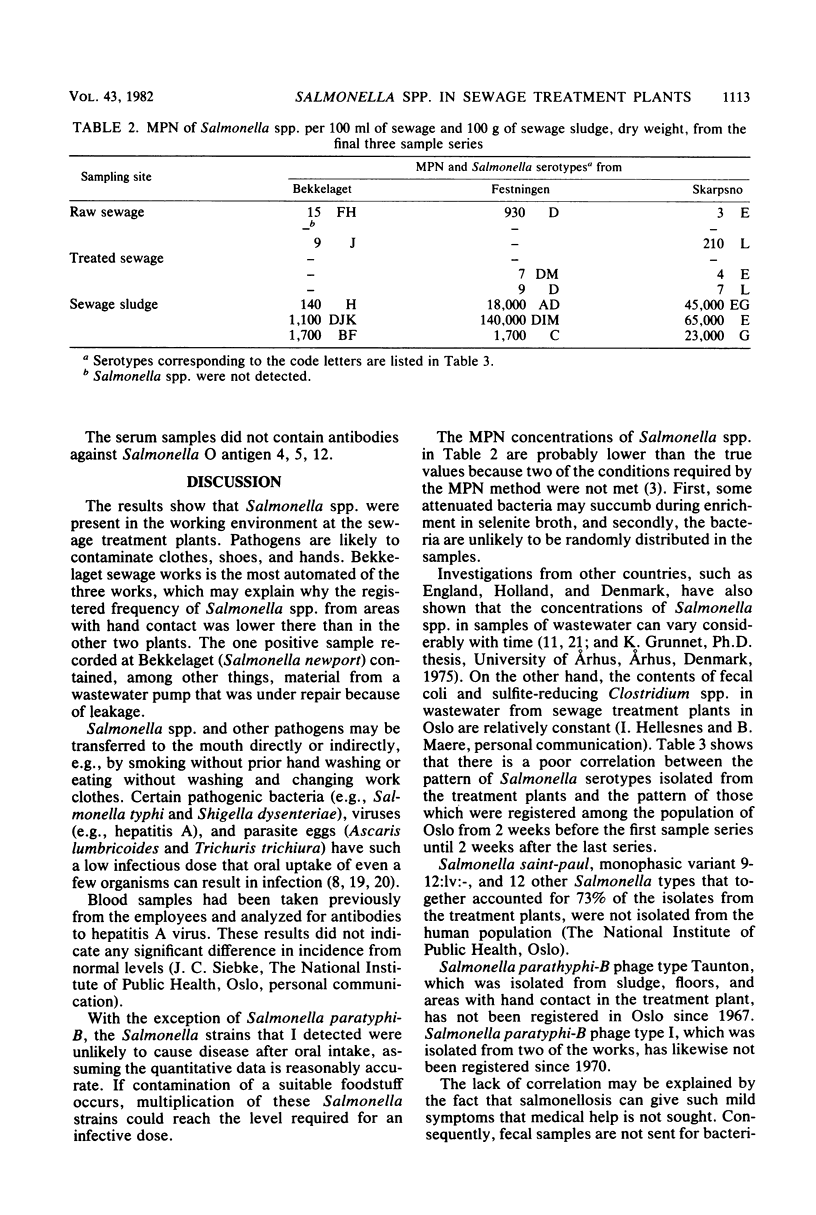
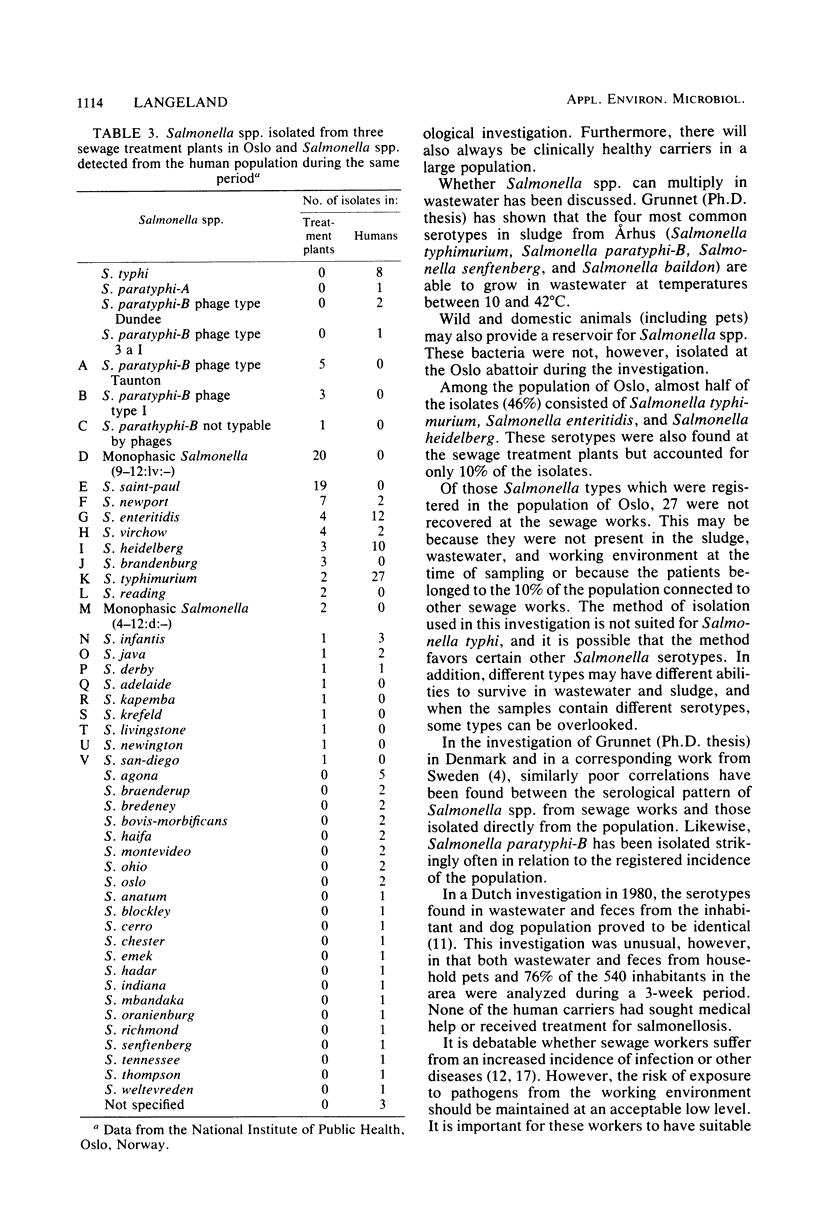
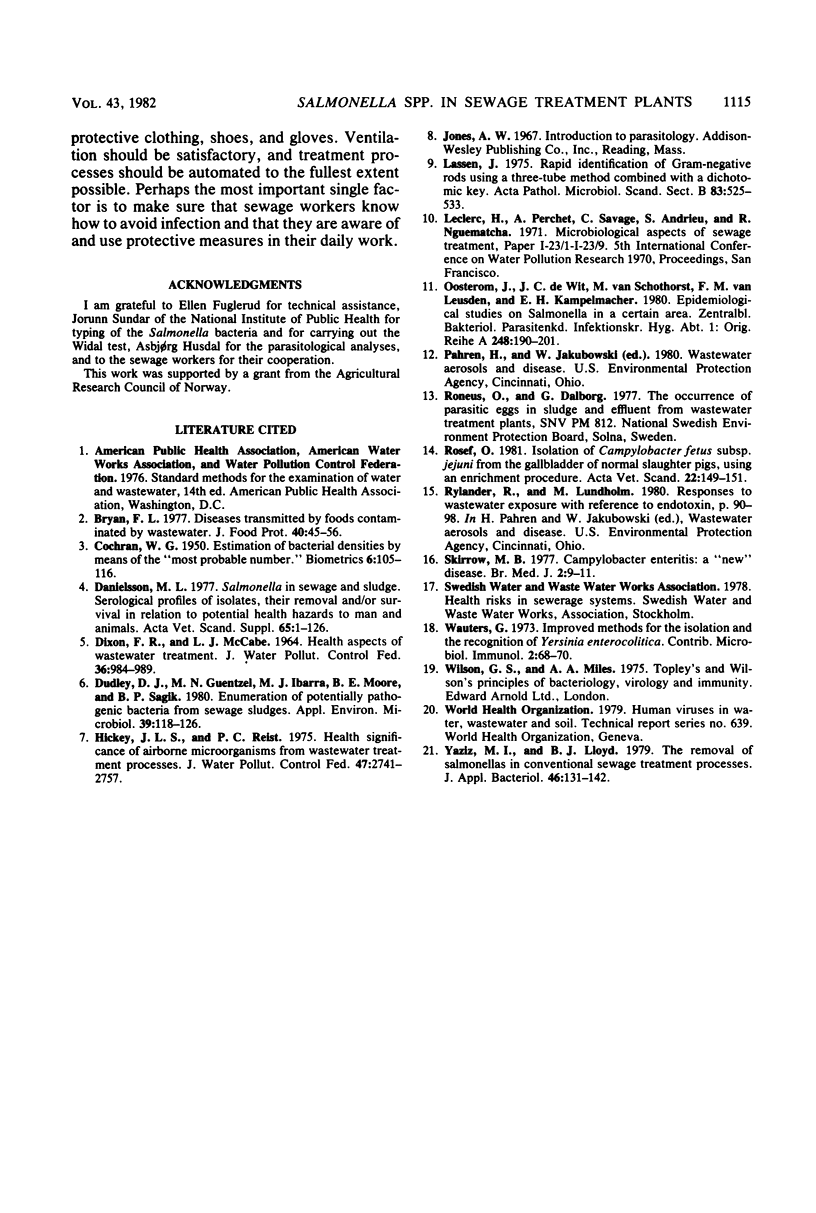
Selected References
These references are in PubMed. This may not be the complete list of references from this article.
- COCHRAN W. G. Estimation of bacterial densities by means of the "most probable number". Biometrics. 1950 Jun;6(2):105–116. [PubMed] [Google Scholar]
- Danielsson M. L. Salmonella in sewage and sludge. Serological profiles of isolates, their removal and/or survival in relation to potential health hazards to man and animals. Acta Vet Scand Suppl. 1977;(65):1–126. [PubMed] [Google Scholar]
- Dudley D. J., Guentzel M. N., Ibarra M. J., Moore B. E., Sagik B. P. Enumeration of potentially pathogenic bacteria from sewage sludges. Appl Environ Microbiol. 1980 Jan;39(1):118–126. doi: 10.1128/aem.39.1.118-126.1980. [DOI] [PMC free article] [PubMed] [Google Scholar]
- Hickey J. L., Reist P. C. Health significance of airborne microorganisms from wastewater treatment processes. Part I: Summary of investigations. J Water Pollut Control Fed. 1975 Dec;47(12):2741–2757. [PubMed] [Google Scholar]
- Oosterom J., de Wit J. C., van Schothorst M., van Leusden F. M., Kampelmacher E. H. Epidemiological studies on Salmonella in a certain area ("Walcheren Project"). IV. The incidence of Salmonella in the sewage system, in the faeces of man and pets as well as in shops, kitchens and lavatories in the village of Aagtekerke. Zentralbl Bakteriol A. 1980 Nov;248(2):190–201. [PubMed] [Google Scholar]
- Rosef O. Isolation of Campylobacter fetus subsp. jejuni from the gallbladder of normal slaughter pigs, using an enrichment procedure. Acta Vet Scand. 1981;22(1):149–151. doi: 10.1186/BF03547219. [DOI] [PMC free article] [PubMed] [Google Scholar]
- Skirrow M. B. Campylobacter enteritis: a "new" disease. Br Med J. 1977 Jul 2;2(6078):9–11. doi: 10.1136/bmj.2.6078.9. [DOI] [PMC free article] [PubMed] [Google Scholar]
- Yaziz M. I., Lloyd B. J. The removal of salmonellas in conventional sewage treatment processes. J Appl Bacteriol. 1979 Feb;46(1):131–142. doi: 10.1111/j.1365-2672.1979.tb02590.x. [DOI] [PubMed] [Google Scholar]


